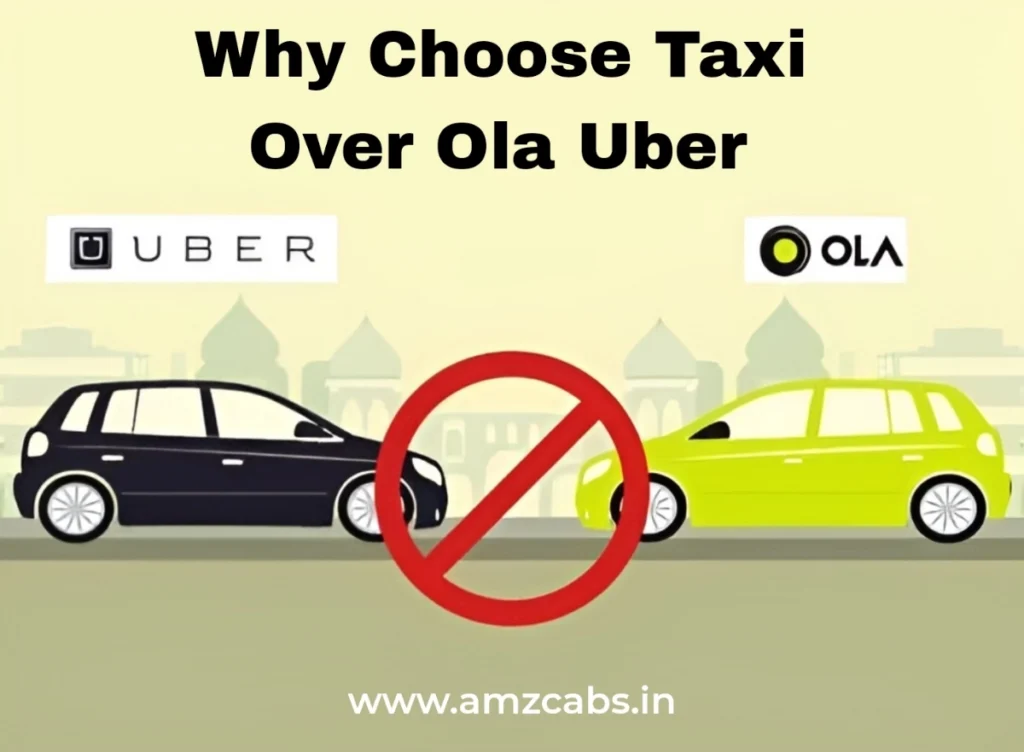In today’s fast-paced world, ride-hailing services such as Ola and Uber have become immensely popular. However, the traditional taxi service remains a strong contender for numerous reasons. In this article, we will delve into the compelling reasons why choosing a taxi over Ola or Uber might be the better option for many passengers.
Reliability and Availability in Taxi over Ola Uber
24/7 Availability
Traditional taxis offer 24/7 availability, ensuring that no matter the time of day or night, a ride is always accessible. In contrast, ride-hailing services like Ola and Uber can sometimes face shortages, especially during peak hours or late at night, leaving passengers stranded.
Street Hailing Convenience
One of the significant advantages of taxis is the ability to hail a cab from the street. This convenience means there’s no need to rely on an app or wait for a car to arrive. Simply step outside, and a taxi can often be found within minutes.
Experienced and Knowledgeable Drivers
Professional Training
Taxi drivers typically undergo rigorous training and certification processes. They are well-versed in local traffic laws and routes, ensuring a safer and more efficient journey. In contrast, Ola and Uber drivers might not have the same level of training, leading to potential issues in navigation and driving skills.
Local Knowledge
Taxi drivers often possess extensive local knowledge, enabling them to take the quickest and most efficient routes. This expertise can be particularly beneficial during traffic congestion or when navigating less familiar areas. Ride-hailing drivers, who might rely heavily on GPS, could lack this in-depth understanding of local streets and shortcuts.
Safety and Security
Stringent Regulations
Taxis are subject to strict government regulations that ensure safety and reliability. These regulations include regular vehicle inspections, background checks for drivers, and adherence to local traffic laws. On the other hand, ride-hailing services have faced criticism for their less stringent regulatory measures.
Accountability
With a regulated taxi service, passengers have a clear avenue for lodging complaints or reporting issues. Taxi companies maintain detailed records of rides and driver information, which enhances accountability and ensures that any problems are promptly addressed.
Transparent Pricing
Fixed Fares
Taxis often operate on a fixed fare system, which can be more transparent and predictable for passengers. Unlike Ola and Uber, where surge pricing can significantly increase the cost during peak hours, taxi fares remain consistent, allowing passengers to budget their travel expenses more effectively.
No Hidden Charges

Taxi services are known for their straightforward pricing with no hidden charges. Ride-hailing apps sometimes add extra fees for services like tolls or dynamic pricing, which can catch passengers off guard. Choosing a taxi ensures that the price you see is the price you pay.
Supporting the Local Economy
Local Employment
Choosing a taxi supports local employment as taxi drivers are often independent operators or work for small, local companies. This support helps sustain the local economy and provides jobs within the community. Conversely, ride-hailing services are multinational corporations that may not contribute as directly to the local economy.
Fair Wages
Taxi drivers typically earn a more consistent and fair wage compared to ride-hailing drivers, who might face fluctuating earnings due to the variable nature of the gig economy. By opting for a taxi, passengers are contributing to a fairer, more stable income for drivers.
Personalized Service
Customer Relations

Taxi drivers often develop strong customer relations, providing a more personalized service. Regular customers might even have their favorite drivers, creating a sense of familiarity and trust that is often missing with ride-hailing services, where drivers change frequently.
Additional Services
Many taxi drivers go above and beyond to offer additional services such as assisting with luggage, providing local tips, and ensuring a comfortable ride. This level of personalized attention can significantly enhance the passenger experience compared to the more transactional nature of ride-hailing apps.
Environmental Considerations
Regulated Emissions
Taxis are often subject to emission regulations, ensuring that they meet certain environmental standards. Many cities have introduced eco-friendly taxi options, such as hybrid or electric vehicles, to reduce the carbon footprint. Ride-hailing services might not have the same level of regulatory oversight, potentially leading to higher emissions.
Fewer Dead Miles
Taxi services can also contribute to fewer dead miles, as taxis are continuously on the move and can pick up passengers directly from the street. Ride-hailing drivers often have to travel significant distances between rides, contributing to higher fuel consumption and emissions.
Conclusion
While Ola and Uber offer modern conveniences and technology, the traditional taxi service boasts numerous advantages that make it a compelling choice for many passengers. From reliability and safety to transparent pricing and local economic support, taxis provide a well-rounded and dependable transportation option. For those who value these attributes, choosing a taxi over Ola Uber is a decision that promises both peace of mind and quality service.





